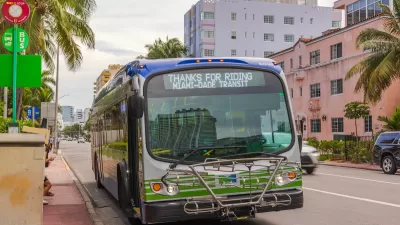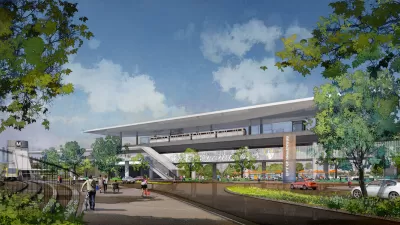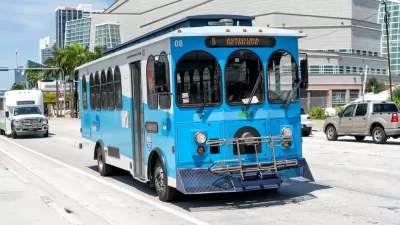The county completed the draft environmental impact study for a monorail and people mover planned as part of its rapid transit system.

According to an article in The Next Miami, Miami-Dade County has issued the draft environmental study for a rapid transit line that would connect downtown Miami and Miami Beach as part of the Strategic Miami Area Rapid Transit (SMART) Program. “The study covers the Beach Corridor Trunkline from the existing Metromover system in Downtown Miami to 5th Street and Washington Avenue in the City of Miami Beach.”
The project would include a monorail to Miami Beach and a “Metromover-type system” to the city’s Design District.
As noted in the study’s executive summary, “The purpose of this project is to increase the person-throughput to the Beach Corridor’s major origins and destinations via a rapid transit technology. The need for the project is the extensive population growth throughout the study area, resulting in ever-increasing traffic congestion and the demand for enhanced access to the area’s employment centers, facilities and services.”
Critics of the project question the price tag, which ballooned to over $1 billion from the original estimate of $587 million.
FULL STORY: Studies Completed For Miami Beach Rapid Transit, People Mover To Design District

Alabama: Trump Terminates Settlements for Black Communities Harmed By Raw Sewage
Trump deemed the landmark civil rights agreement “illegal DEI and environmental justice policy.”

Planetizen Federal Action Tracker
A weekly monitor of how Trump’s orders and actions are impacting planners and planning in America.

The 120 Year Old Tiny Home Villages That Sheltered San Francisco’s Earthquake Refugees
More than a century ago, San Francisco mobilized to house thousands of residents displaced by the 1906 earthquake. Could their strategy offer a model for the present?

San Francisco Opens Park on Former Great Highway
The Sunset Dunes park’s grand opening attracted both fans and detractors.

Oregon Legislature to Consider Transit Funding Laws
One proposal would increase the state’s payroll tax by .08% to fund transit agencies and expand service.

Housing Vouchers as a Key Piece of Houston’s Housing Strategy
The Houston Housing Authority supports 19,000 households through the housing voucher program.
Urban Design for Planners 1: Software Tools
This six-course series explores essential urban design concepts using open source software and equips planners with the tools they need to participate fully in the urban design process.
Planning for Universal Design
Learn the tools for implementing Universal Design in planning regulations.
Clanton & Associates, Inc.
Jessamine County Fiscal Court
Institute for Housing and Urban Development Studies (IHS)
City of Grandview
Harvard GSD Executive Education
Toledo-Lucas County Plan Commissions
Salt Lake City
NYU Wagner Graduate School of Public Service





























